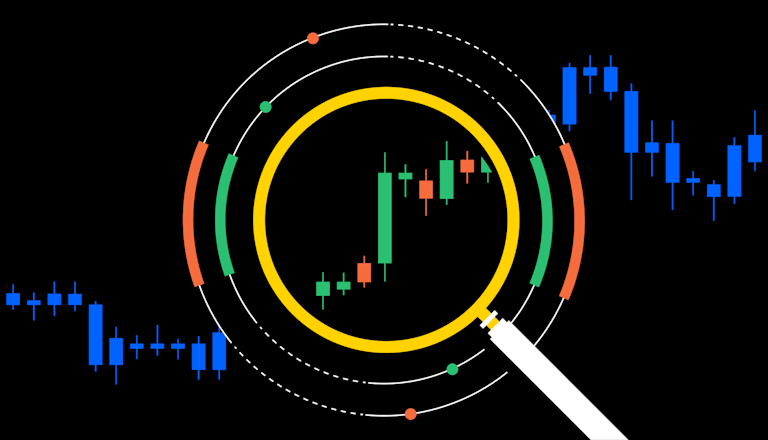The Ultimate Guide to Trading Crypto Strategies, Tips, and Trends

The Ultimate Guide to Trading Crypto: Strategies, Tips, and Trends
In recent years, trading crypto has become one of the most dynamic and thrilling arenas in the financial world. With the advent of cryptocurrencies like Bitcoin, Ethereum, and countless altcoins, many traders and investors alike are flocking to this digital frontier in hopes of capitalizing on unprecedented opportunities. If you’re looking to dive into the world of crypto trading, this comprehensive guide will equip you with valuable insights and strategies to help you navigate the complexities of this market. Moreover, keep an eye on innovations in technology, such as the recent announcement of a partnership between Achronix and Mobiveil to deliver high-speed solutions, which highlights the potential for growth and innovation in the tech space that can impact crypto trading. trading crypto https://www.stocktitan.net/news/ACEV/achronix-and-mobiveil-announce-partnership-to-deliver-high-speed-pvufqew53qxa.html
Understanding the Basics of Crypto Trading
Before delving deeper into strategies, it’s vital to understand the foundational concepts of crypto trading. What is cryptocurrency? A cryptocurrency is a digital or virtual currency that uses cryptography for security, making it nearly impossible to counterfeit. The most well-known cryptocurrency is Bitcoin, introduced in 2009, but thousands of alternative coins (altcoins) have emerged since then.
The trading of cryptocurrencies occurs on exchanges, where individuals can buy, sell, or trade digital assets for fiat currencies or other cryptocurrencies. These transactions require a digital wallet, which serves as a secure place to store your currencies.
Choosing the Right Exchange
One of the fundamental steps in crypto trading is choosing a reliable exchange. Not all exchanges are created equal, and it’s crucial to select one that adheres to regulatory standards, employs robust security protocols, and offers a seamless user experience. Some popular exchanges include Coinbase, Binance, and Kraken. Before registering, consider factors like fees, available cryptocurrencies, user reviews, and security features such as two-factor authentication (2FA).
Basic Trading Strategies
Once you’ve chosen an exchange and created a wallet, it’s time to explore various trading strategies. Here are some of the most common approaches:
1. Day Trading
Day trading involves buying and selling cryptocurrencies within the same day, capitalizing on short-term price movements. This strategy requires a keen understanding of market trends and often necessitates quick decision-making skills.
2. Swing Trading
Swing trading is a medium-term strategy that leverages price swings over several days or weeks. Traders using this method analyze market trends and attempt to identify potential reversal points to enter and exit positions.
3. HODLing
The term “HODL” originated from a misspelled forum post but has since evolved into a mantra for long-term investors. It describes the strategy of buying cryptocurrencies and holding them for an extended period, regardless of market volatility.
Risk Management

Trading crypto can be highly lucrative but also carries substantial risk. Effective risk management is crucial to safeguard your investments. Here are some strategies to consider:
1. Diversification
Don’t put all your eggs in one basket. By diversifying your portfolio across different cryptocurrencies, you can mitigate potential losses. Various coins react differently to market changes, insulating your investments from extreme movements in a single asset.
2. Setting Stop-Loss Orders
A stop-loss order automatically closes a trade when an asset reaches a predetermined price, limiting potential losses. Setting stop-loss orders can help protect your capital and prevent emotional decision-making during market fluctuations.
Staying Informed: Market Analysis and News
Monitoring market trends and staying informed about news is imperative for successful crypto trading. Factors like regulatory changes, technological developments, and market sentiment can significantly impact prices. Utilize tools such as market analysis reports, social media, and news websites to remain updated on crucial information that could affect your trades.
Technical Analysis: A Deeper Dive
Technical analysis involves studying price charts and utilizing various indicators to predict future price movements. Some popular indicators include:
1. Moving Averages
Moving averages help smooth out price data and identify trends. Traders often look for crossovers between short-term and long-term moving averages to signal potential entry or exit points.
2. Relative Strength Index (RSI)
The RSI is a momentum oscillator that measures the speed and change of price movements, indicating overbought or oversold conditions. An RSI above 70 may indicate an overbought asset, while an RSI below 30 could suggest it is oversold.
Emotions and Trading Psychology
One of the most challenging aspects of crypto trading is managing emotions. Fear and greed can cloud judgment and lead to impulsive decisions. Developing a trading plan and sticking to it can help regulate emotions and guide your trading activities.
The Future of Crypto Trading
The world of crypto is evolving rapidly. As regulations adapt and technology improves, new opportunities will continue to emerge. The integration of blockchain technology into various sectors heralds a future where cryptocurrencies could become even more mainstream. Keeping an eye on advancements such as Decentralized Finance (DeFi) and Non-Fungible Tokens (NFTs) can provide crucial insights into emerging trends that may shape the future of crypto trading.
Conclusion
Trading crypto is a thrilling yet challenging endeavor that requires education, strategy, and discipline. By equipping yourself with the right tools, staying informed about market trends, and effectively managing risk, you can navigate this volatile landscape successfully. Always remember, the key to successful trading lies not only in strategy but also in one’s ability to adapt to the ever-changing market dynamics.
